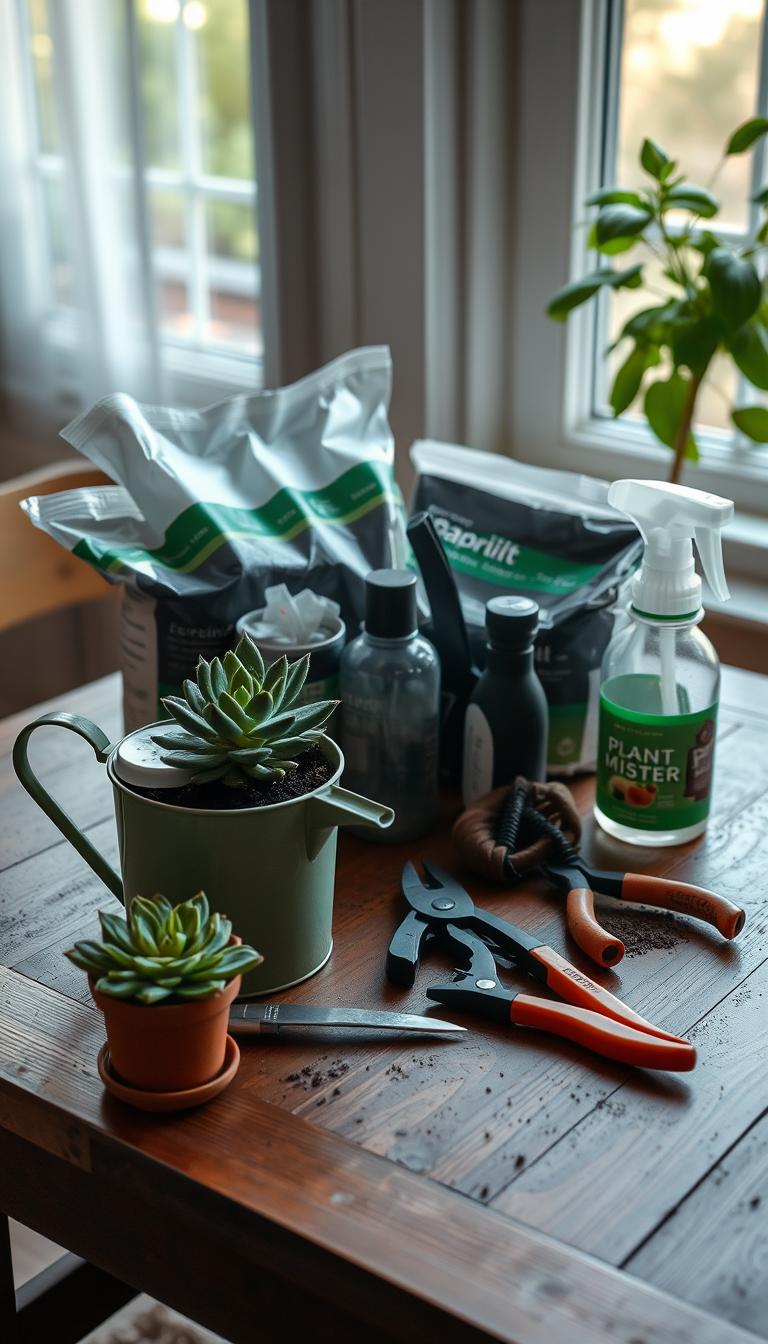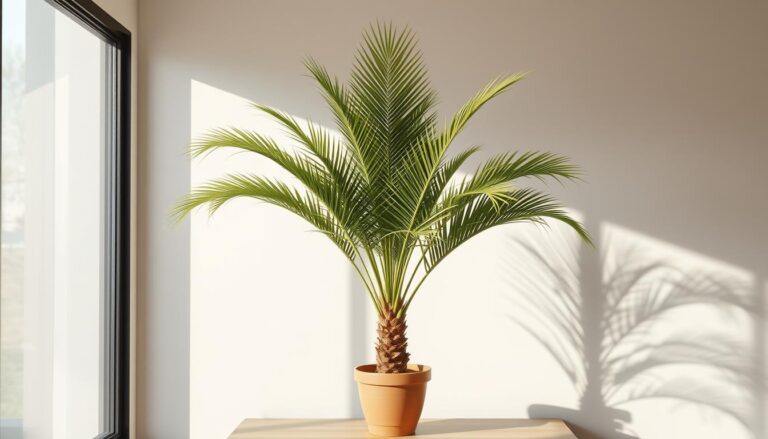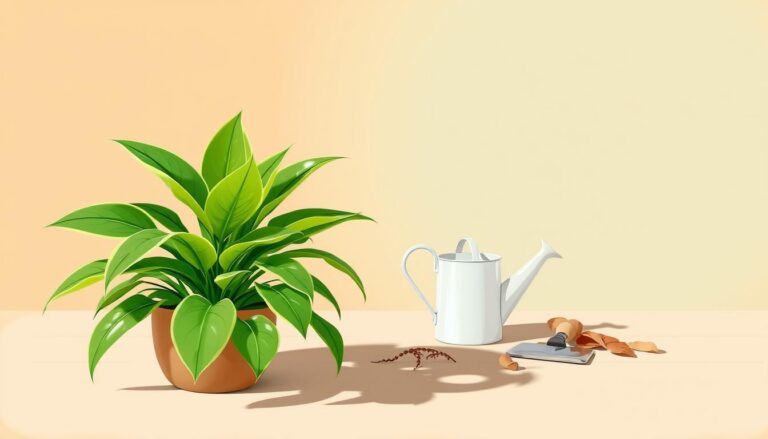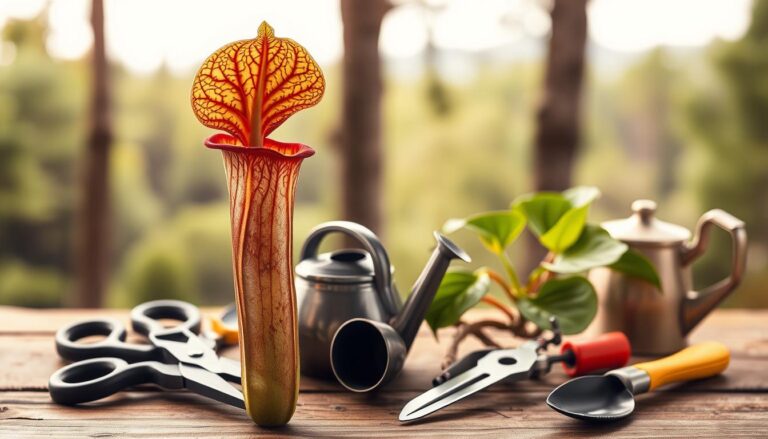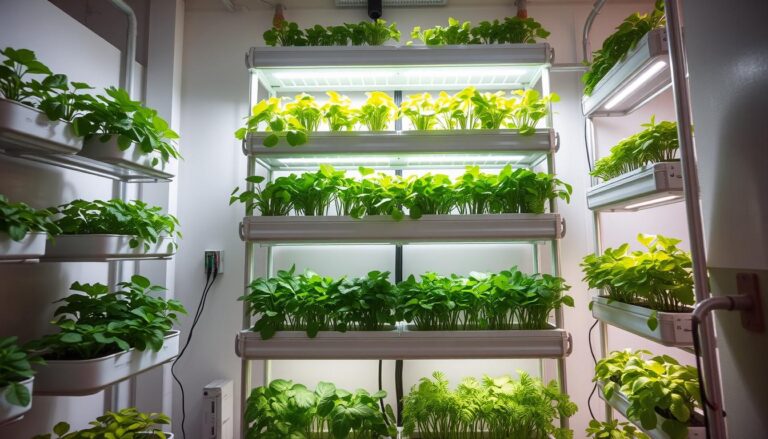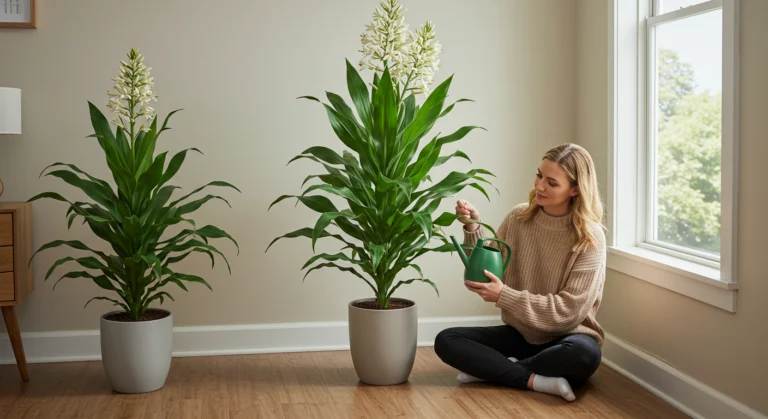The Ultimate Plant Care Skills list You Need to Know
Plant care skills list — it might sound technical, but it’s the secret behind every thriving indoor jungle. Remember when your first green companion thrived under your attention? That moment when crisp leaves unfurled or delicate blooms emerged—that’s the magic of nurturing life. A decade ago, my apartment was a graveyard for succulents. Today, it’s a lush jungle. What changed? I discovered how to listen.
Every thriving indoor oasis starts with understanding core principles. You don’t need a green thumb—just the right knowledge. Think of it as learning a language: once you grasp hydration rhythms, light preferences, and soil secrets, your space transforms. My snake plants taught me patience. My ferns showed me balance. Your journey begins here.
This guide isn’t about rigid rules. It’s about adapting to what your green friends whisper through their leaves. We’ll explore how to gauge sunlight levels in your room, choose pots that breathe, and troubleshoot common issues before they escalate. You’ll learn why overwatering kills faster than neglect and how to create custom soil blends.
Table of Contents
Plant Care Skills List: Your Roadmap to a Lush Indoor Garden
Imagine transforming that sunlit corner into a vibrant green sanctuary. Success starts with mastering two essentials: hydration patterns and illumination balance.
Hydration Patterns & Illumination Balance
Check soil moisture before reaching for your watering can. Stick your finger 2 inches deep—if dry, it’s time. Morning hydration works best, allowing excess moisture to evaporate before cooler nights.
Bright indirect light suits most varieties. Observe how rays move through your space:
| Light Type | Daily Exposure | Best For |
|---|---|---|
| Direct sunlight | 4-6 hours | Cacti, succulents |
| Filtered light | 6-8 hours | Ferns, calatheas |
| Low light | 2-4 hours | Snake plants, ZZ varieties |
Earth Foundations & Nutrient Boosters
Well-draining potting mix prevents root rot. Combine perlite, orchid bark, and charcoal for airy texture. During growing seasons (spring/summer), feed greenery every 4-6 weeks.
Follow these fertilization guidelines:
- Liquid formulas for quick absorption
- Half-strength doses prevent burn
- Organic options like worm castings
Match soil composition to your green companions’ needs. Succulents demand gritty blends, while tropicals thrive in moisture-retentive mixes. Proper drainage holes complete the equation.
Understanding Your Plants’ Environmental Needs
Your living space holds hidden microclimates that determine green success. North-facing glass panels filter soft rays, while southern exposures blast intense beams. Track how illumination shifts monthly—what works in June may scorch by August.
Optimizing Light Conditions for Every Room
East-facing windows offer gentle morning light perfect for prayer varieties. West-side spaces deliver strong afternoon rays that suit desert natives. Use sheer curtains to diffuse harsh midday sun in summer months.
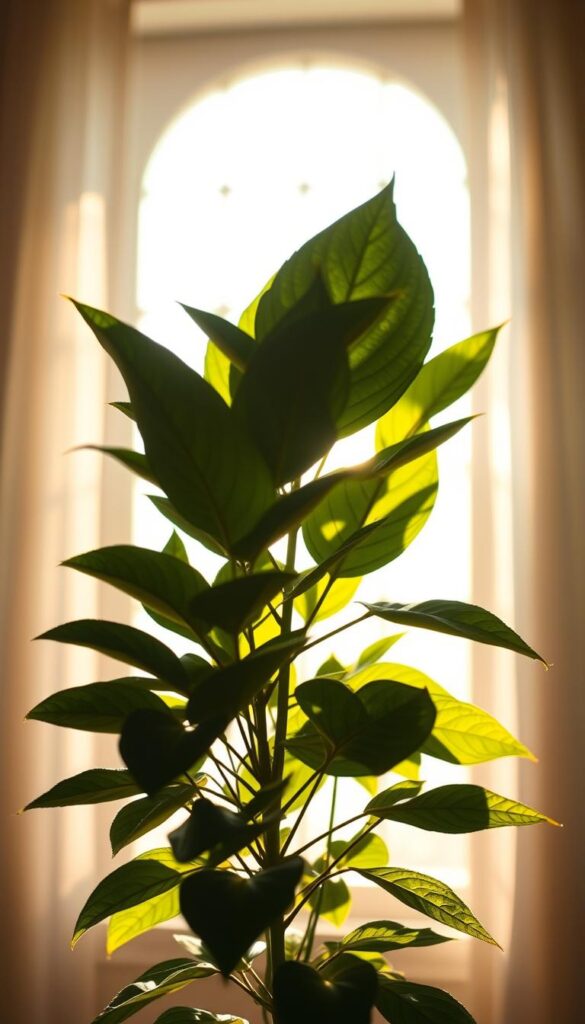
| Window Direction | Light Type | Ideal Varieties |
|---|---|---|
| South | Bright direct | Jade, aloe vera |
| North | Low indirect | Pothos, peace lily |
| East/West | Medium filtered | Philodendron, dracaena |
Adjusting Watering Practices Through the Seasons
Soil dries faster when heaters run in winter. Wait an extra 2-3 days between hydration sessions from November to February. Summer’s humidity lets you stretch intervals—test moisture with a bamboo skewer.
Watch for these stress signals:
- Crispy leaf edges = thirst
- Yellowing lower leaves = excess moisture
- Drooping stems = check root health
Group moisture-loving varieties near humidifiers. Rotate pots quarterly to ensure even growth patterns. Your observation skills become the ultimate growth regulator.
Expert Tips for Houseplants and Indoor Gardening
Busy schedules don’t have to mean sacrificing lush greenery. The key lies in pairing your routine with greenery that thrives on minimal attention. Let’s explore how to build a low-effort yet vibrant collection.
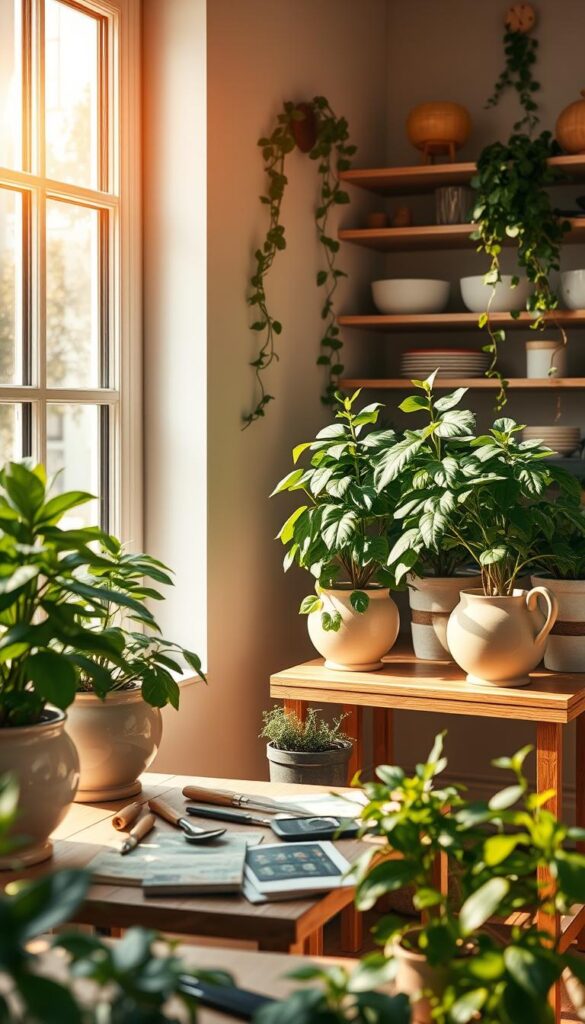
Selecting Plants That Match Your Lifestyle
Low-light champions like snake varieties or pothos adapt to dim corners and irregular water schedules. For sunny spots, try aloe or haworthia—they forgive occasional neglect. Consider these matches:
| Lifestyle | Light Needs | Top Picks |
|---|---|---|
| Frequent traveler | Low indirect | ZZ plant, cast iron |
| Home office worker | Medium filtered | Spider plant, philodendron |
| Sunny apartment | Bright direct | Jade, string of pearls |
Maintaining a Healthy Indoor Ecosystem
Group moisture-loving varieties near pebble trays to boost humidity naturally. Check drainage holes monthly—clogged openings invite root rot. In winter, reduce feeding and mist leaves to counter dry air.
Pruning, Deadheading, and Routine Maintenance Strategies
Snip yellowing leaves at the base using sterilized shears. “Deadheading spent blooms redirects energy to new growth,” notes The Sill’s team. Repot root-bound varieties every 18-24 months, teasing apart tangled roots gently.
Wipe dust from foliage quarterly to maximize light absorption. Rotate pots weekly for even growth patterns. These small acts prevent pests and promote longevity in your indoor garden.
Conclusion
Your journey from tentative greenery guardian to confident plant parent culminates here. Mastering hydration rhythms and light patterns transforms survival into thriving ecosystems. Those snake varieties on your desk? They’re now teaching you about resilience. The succulents by the window? Lessons in boundaries.
Always use the finger-test before watering—dry knuckle-deep soil means go-time. Remember: drainage holes prevent swampy disasters. During winter months, stretch intervals between drinks as heaters parch the air. Match potting blends to each green companion’s needs—gritty mixes for desert dwellers, moisture-rich mediums for tropicals.
Watch for silent signals. Crispy edges beg for humidity boosts. Yellowing leaves whisper “ease up on hydration.” Rotate pots weekly to ensure balanced sun exposure. Even low-light champions like ZZ varieties appreciate seasonal repositioning.
Your evolving knowledge turns windowsills into living art. Small daily checks—measuring light levels, testing soil texture—build unstoppable momentum. Start today: adjust one routine, observe the response, and let your indoor oasis flourish.

